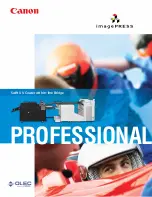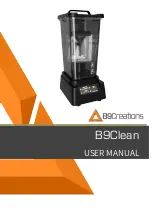
Wide
Format
March 8, 2009
Océ Arizona 350 GT Printer
www.bertl.com
Copyright © 2008 BERTL, Inc.
March 8, 2009
All Rights Reserved. The license under which this document is made available and applicable law prohibit any reproduction or further transmission of any portion of this document. This
document may only be viewed electronically through the www.BERTL.com Web site and may not be stored in electronic or hard copy format. Any reproduction of trademarks is strictly
prohibited. BERTL accepts no responsibility for any inaccuracies or omissions contained in this document.
Page 8
PRINTING WITH WHITE INK
Of course if you are printing using a white media — either rigid or roll — you
wouldn’t need a printer capable of printing white ink. However if you are
planning to print on media not naturally white like wood, metals, fabrics, or
transparent media, you would need to consider the benefit of printing with
white ink.
The white ink option is new to the Océ Arizona 350 GT printer and can either
be ordered as factory installed or installed as a field upgrade later.
Depending on the application, there are a number of different modes for
applying white ink with the Océ Arizona 350 GT printer.
Under-printing
•
Creates a base layer on non-white media onto which a color
image can be printed.
•
Used for packaging prototyping on cardboard or foil, industrial
applications, specialty printing, and object printing.
Over-printing
•
Applies a layer of white ink overtop colored ink.
•
Used for light diffusion on backlit images when printed as a
second surface on transparent media.
Between-layer printing
•
Applies a layer of white ink between two layers of color.
•
Used for day/night backlit prints, window cling (above), etc.
Spot color
•
Prints white on white/non-
white media as a spot
color effect.
All these effects can be used on the table
for rigid media or on the roll media option
for flexible media.
One of the key benefits of the Océ
Arizona 350 GT printer is that white can
be applied at the same time as the other
colors are laid out in one operation,
avoiding the slower two-step procedure
found on some competitive products.









































